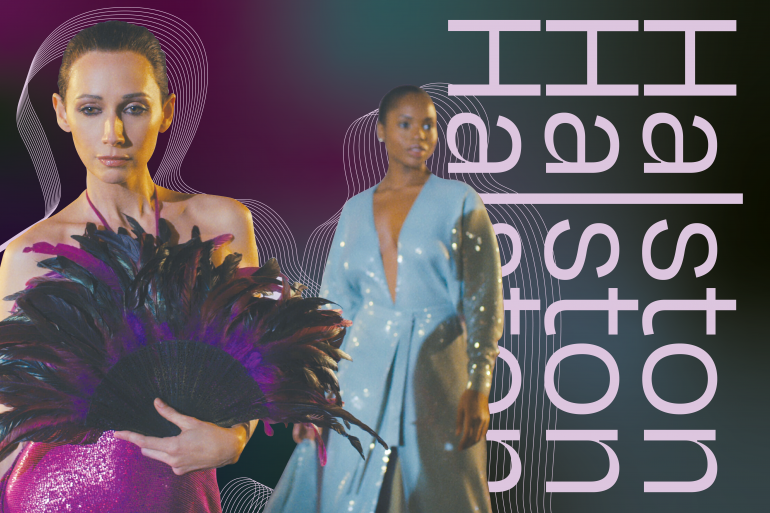Ryan Murphy’s new limited series drama “Halston” landed on Netflix last Friday. The show follows the career of famed New York designer Roy Halston and the epic ride through his career. The show stars Ewan McGregor as Halston, Rebecca Dayan as Italian socialite and jewelry designer Elsa Peretti, and Krysta Rodriguez as singer Liza Minnelli.
Halston’s career began as a milliner, and his big break came when he created Jackie Kennedy Onassis’s pillbox hat for her husband’s Inauguration. From there, Halston ran his store out of Bergdorf Goodman. Women flocked to him for all their hat needs, and he was master at his craft. But, once hats fell out of fashion, business drops drastically. Halston then shifted to style and began his line of clothing. This launched him to fashion superstardom, dressing the likes of Liza Minnelli and Diana Ross.
The show follows all of career highs and lows. Early in his career, Halston signed away the rights to his name. This major mistake would be the downfall of his career, leading to the diffusion of brands and products that have nothing to do with the original Halston brands. Halston’s luggage, sheets and even a JCPenney’s collection all became attached to his name. This began a lack of respect from the fashion industry. His career continues to fall when he gets involved in the nightlife of Studio 54. Although he made some of the most fabulous dresses the club ever saw, drugs, alcohol and sex began to overtake his life. He wouldn’t show up for work, and his brand struggled.
At the end of the series, we see Halston’s relationship with infamous dance teacher Martha Graham. She asks him to design costumes for her upcoming shows, and he unwillingly accepts. The costumes end up being the highlight of the show, and Halston feels a creative revival. Soon after, Halston passes away from complication from AIDS, and his business continued.
The series captured his career lows well. His struggles with addiction are present in later episodes; earlier episodes lack a clear sense of Halston’s designs. These characters tell me Halston is one of the most excellent American designers ever, but I did not see that. I wanted more glamour and fashion. His personal life was incredibly fascinating to learn about, but I struggled to understand how Halston truly found success through his designs.
Halston’s name and the dilution of that is a significant theme throughout the show. One of my favorite scenes in the show is in Episode four, and it has an overlapping of commercials of Halston products. It shows the severity of what his name was dragged down to.
Ryan Murphy might need to learn a lesson from his show. After a $300 million deal with Netflix in 2018, Murphy has produced his ninth project for Netflix in 3 years while also working on his other two shows, “American Horror Story” and “POSE.” The famed producer might have spread himself too thin, and this defiantly shows in “Halston.” The show relies on typical Murphy tropes. Excellent production value, big-name actors, and lots of sex and drugs, but Halston had to potential to be so much more.
Murphy isn’t the only one who should take a lesson from his show. Netflix and the current Halston Brand are cashing in by creating a collaboration capsule collection to go along with the series. The collection is dull and lacks the true design and craftsmanship Halston’s original gowns had. Instead, they used a name to make money.
“Halston” was overall disappointing. I came for the fashion and a great story but got mediocre designs and a lackluster narrative. There was just so much material to work with, and the team just skimmed the top of it. I hope Murphy’s future works with Netflix are not as disappointing.
Words by Tommy Drennan.
Graphic by Emily Tobias.

